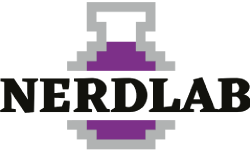Podcast: Play in new window | Download
Subscribe: Google Podcasts | Spotify | Amazon Music | RSS
In episode 19 of the Nerdlab we will follow up on last weeks episode. So if you didn’t listen to episode 18 I strongly recommend listening to this episode first. Because I discussed a lot of basics about Artificial Intelligence. We talked about some design principles and different levels of AI in board games. Today my plan is to continue this topic by analyzing a lot of different examples.
Examples we will talk about in this episode:
- Swarm Behaviour and Crowd Control in Myth
- Turn order as Targeting Variable in Gloomhaven and Dice born Heroes
- Predictable Chaos in Pandemic, Aeons End, Aventuria and Kingdom Death
- Dummy Players Gloomhaven and 7 Wonders
- If then logic for Movement and Attacking in Dungeons and Dragons Adventure System Board Games
- Following a plan in Shadowrift
- Assigning enemies to players in Warhammer Quest (ACG)
- A digital companion App in Descent
In my game movement is not an integral part of the game. My enemies do not move on a board in a typical way. Instead of being engaged with a specific hex on the board, enemies are engaged in combat with a player. That makes movement obsolete or at least very very simple. And that makes line of sight obsolete. Because I do not have to bother with movement and line of sight, I have the freedom to focus a little bit more on the targeting and action selection of my enemies which I think is a refreshing alternative to what I have seen so far.
How enemies choose which player to target is based on the actions players performed in previous rounds. Enemies have a higher chance to target a player that has performed very strong attacks or specific quest related actions. The actions players take have a very high impact on the enemies targeting behaviour.
In addition to that, some of my enemies can perform quest specific actions. These actions are defined in the quest design. The implementation is super simple. The enemy card says: On a 5 the enemy performs quest action 1 and in the scenario book it is specified what quest action 1 means. The result is that the same enemy can act very differently in different quests or even in different stages of the quest. That makes the enemies extremely contextual and generates a feeling of intelligent behavior.
However, going through all of these examples helped me a lot to generate some new interesting ideas for my AI. I really like the implementation of predictable chaos and currently think about how I could add more of that into my game.
In addition to that my main focus is still to find the sweet spot between a simple and very compelling AI that is both easy to handle and complicated to defeat. As mentioned last week I think this is a challenge everyone has to solve for his or her own game. During my playtests, I always try to identify if managing the AI feels more like a chore or like fun for the players. I look for moments where they try to predict the enemie`s tactic and then either have a moment of success or get surprised out of nowhere. These are the moments I try to generate with my artificial intelligence.
One more thing: A lot of you have joined the Nerdlab Community last week and received the sneak peek advice from Jamey Stegmaier which I think was a great advice. I am really happy to see the community growing. I am still thinking about the best way to manage the community. Maybe a discord, maybe a facebook group or maybe a Reddit group. I don’t know yet but there will be something coming where we all can exchange our ideas and help each other on our game design adventure. If you have any ideas or just want to be part of that growing community from the beginning you can sign up on nerdlab-games.com. The link can be found in the show notes as well.
This week I am going to share with all community members the one thing Mike Selinker designer of Pathfinder, Betrayal at the house on the hill and Apocrypha wished he had known before he started his journey as a game designer.
Join the Nerdlab Community
Thank you for listening and until next week keep designing smart AI’s that may at some point in the future conquer the world and terminate humanity. And of course nerd like a boss.
Important Links:
Join the Nerdlab Community
Nerdlab Website
Nerdlab Facebook Page
Nerdlab on Twitter
Nerdlab on Instagram
Sources:
Music by Mathew Pablo
Part 1 of the AI in boardgames series



Leave A Comment
You must be logged in to post a comment.